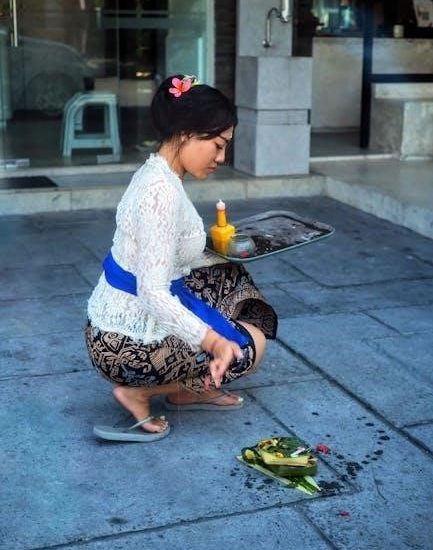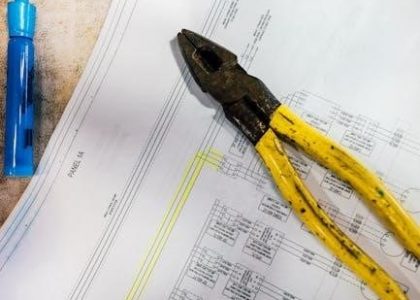The 3rd Degree Masonic Ritual is a pivotal step in Freemasonry, symbolizing a journey of self-discovery and spiritual growth, as detailed in the PDF guide, reflecting centuries of tradition․
1․1 Overview of Freemasonry and Its Degrees
Freemasonry is a fraternal organization with roots in medieval stonemasonry, emphasizing moral and ethical development․ Its teachings are conveyed through a series of degrees, each representing a stage of spiritual and philosophical growth․ The three main degrees—Entered Apprentice, Fellowcraft, and Master Mason—form the foundation of Masonic education․ Each degree builds on the previous one, offering insights into brotherly love, relief, and truth․ The 3rd Degree Masonic Ritual PDF provides a comprehensive guide to understanding these degrees, highlighting their symbolic significance and the moral lessons they impart․ Freemasonry’s structure ensures that members progress gradually, absorbing the principles and values central to the Craft․ This gradual initiation fosters personal development and a deeper understanding of humanity’s shared journey․
1․2 Significance of the 3rd Degree in Masonic Rituals
The 3rd Degree, or Master Mason degree, holds profound significance in Freemasonry, marking the culmination of the initiate’s journey through the three degrees․ It symbolizes the attainment of spiritual enlightenment and mastery over one’s passions and desires․ This degree emphasizes the principles of brotherly love, relief, and truth, while imparting lessons on mortality, resurrection, and the eternal nature of virtue․ The ritual underscores the importance of fidelity to the fraternity and the pursuit of moral perfection․ Its teachings are deeply rooted in symbolism, offering candidates a transformative experience that aligns with the philosophical foundations of Freemasonry․ The 3rd Degree is thus a cornerstone of Masonic philosophy, guiding members toward a life of wisdom and service․
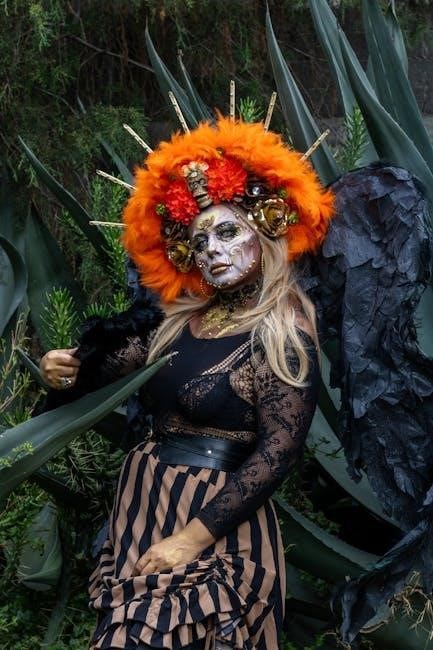
Historical Background of the 3rd Degree Ritual
The 3rd Degree Ritual traces its roots to medieval stonemasonry, evolving over centuries to embody moral and philosophical teachings, as outlined in the PDF guide․
2․1 Origins of the 3rd Degree in Freemasonry
The 3rd Degree, or Master Mason degree, traces its origins to medieval stonemasonry and the legend of Hiram Abiff, a skilled architect in King Solomon’s Temple․ This degree symbolizes the culmination of the Masonic journey, emphasizing themes of resurrection, eternal life, and the triumph of virtue over adversity․ The ritual draws from biblical narratives and philosophical teachings, reflecting the evolution of Freemasonry from operative to speculative practices․ The PDF guide provides detailed insights into these origins, highlighting the historical and symbolic significance of the 3rd Degree as a cornerstone of Masonic tradition and philosophy․
2․2 Evolution of the Ritual Over Time
Over centuries, the 3rd Degree Masonic Ritual has undergone subtle modifications, adapting to societal changes while preserving its core symbolism․ Early versions emphasized mortality and resurrection, reflecting the influence of medieval guild practices․ As Freemasonry spread globally, regional variations emerged, incorporating local customs and interpretations․ The Industrial Revolution brought standardization efforts, with Grand Lodges formalizing rituals to ensure consistency․ Modern practices blend tradition with contemporary values, such as inclusivity and accessibility, yet retain the profound philosophical and symbolic essence of the original rite․ Despite these evolutions, the ritual’s central themes of personal transformation and brotherhood remain unchanged․
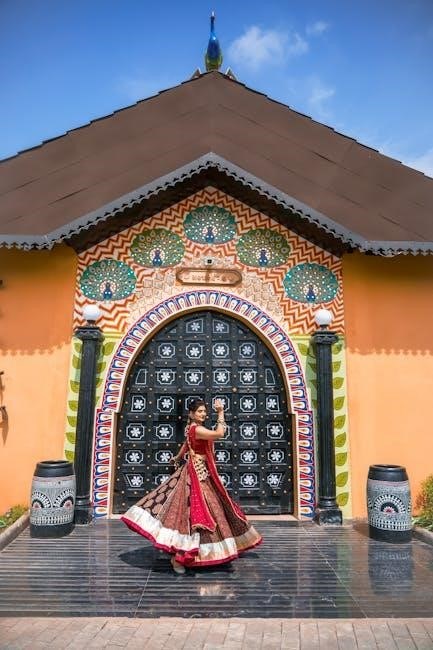
Structure of the 3rd Degree Masonic Ritual
The 3rd Degree Ritual follows a structured sequence, beginning with preparation, progressing through the ceremony’s dramatic stages, and concluding with profound reflections, as outlined in the PDF guide․
3․1 Preparation for the Ritual
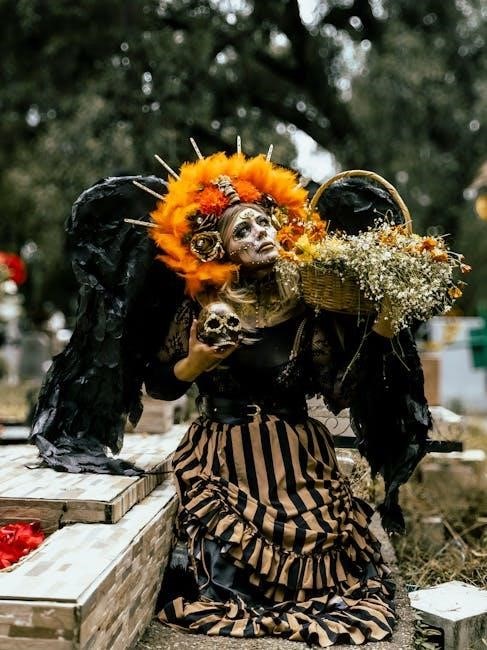
Preparation for the 3rd Degree Masonic Ritual involves both mental and physical readiness․ The candidate must reflect on their journey through the first two degrees, ensuring a deep understanding of Masonic principles․ Lodges often conduct rehearsals to familiarize the candidate with the ritual’s sequence and symbolism․ The Worshipful Master and officers review their roles to ensure a smooth and meaningful ceremony․ The Lodge itself is prepared with specific regalia, tools, and arrangements, emphasizing the sacred nature of the event․ The candidate is also reminded of the importance of secrecy and the commitment they are about to undertake․ Proper attire and a cleared mind are essential for the transformative experience ahead․
3․2 The Ceremony Itself
The 3rd Degree ceremony is conducted in a solemn and reverent atmosphere, with the lodge meticulously prepared to reflect the gravity and significance of the occasion․ The Worshipful Master leads the proceedings, guiding the candidate through a series of symbolic acts that reinforce the core principles of Freemasonry, such as brotherly love, relief, and truth․ The ritual incorporates the use of ancient Masonic tools and regalia, each imbued with specific meanings that underscore the candidate’s journey from darkness to light․ The candidate engages in moments of deep reflection and symbolic gestures, designed to provoke profound introspection and a deeper understanding of Masonic philosophy․ The climax of the ceremony is marked by a powerful rebirth symbolism, where the candidate is dramatically raised from a state of symbolic death to new life as a Master Mason․ This transformative experience is further enriched by the collective support of the brethren, who gather to celebrate the candidate’s newfound status and commitment to the craft․ The ceremony concludes with the candidate being welcomed into the fraternity with a sense of camaraderie and shared purpose․
3․3 Key Symbolic Elements in the Ritual
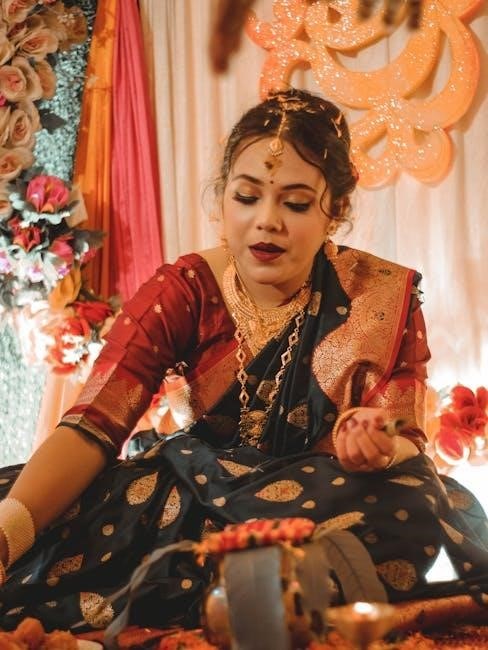
The 3rd Degree Masonic Ritual is rich in symbolic elements that convey profound philosophical and moral lessons․ Central to the ceremony is the grave, representing transformation and rebirth․ The sprig of acacia symbolizes immortality and eternal life, while the Worshipful Master’s role embodies divine authority․ The candidate’s journey through darkness to light signifies enlightenment, and the 5 Orders of Architecture reflect moral virtues․ The letter “G” reminds Masons of the Great Architect of the Universe․ Ritualistic tools, such as the shovel and coffin, emphasize reflection and renewal; These symbols, detailed in the PDF guide, are integral to the ritual’s emotional and spiritual impact, ensuring the candidate grasps the deeper truths of Freemasonry․
3․4 Conclusion of the Ritual and Its Impact
The conclusion of the 3rd Degree Ritual marks the candidate’s symbolic resurrection as a Master Mason, embodying the triumph of virtue over adversity․ The ceremony culminates in the revelation of profound moral and philosophical truths, reinforcing the principles of Freemasonry․ The candidate is then welcomed as a full member of the fraternity, signifying their commitment to brotherly love, relief, and truth․ This transformative experience leaves a lasting impact, fostering personal growth, heightened moral awareness, and a deeper connection to the Masonic community․ The ritual’s emotional and symbolic intensity ensures its lessons remain central to the Mason’s journey, guiding their actions and decisions beyond the lodge․
Symbolism and Philosophy in the 3rd Degree Ritual
The 3rd Degree Ritual is rich in symbolism, exploring themes of resurrection, moral enlightenment, and the pursuit of wisdom, reflecting Freemasonry’s profound philosophical underpinnings, as outlined in the PDF guide․
4․1 The Concept of Death and Rebirth
The 3rd Degree Masonic Ritual profoundly explores the concept of death and rebirth, symbolizing the candidate’s spiritual transformation․ This allegorical journey reflects the shedding of old, limiting beliefs and the emergence of a enlightened, refined character․ The ritual’s dramatic portrayal of mortality serves as a metaphor for personal growth, where the candidate symbolically “dies” to their former self and is “reborn” into a higher state of Masonic understanding and brotherhood․ This powerful symbolism underscores the teachings of self-reflection, renewal, and the pursuit of wisdom, aligning with Freemasonry’s core philosophy of personal and moral development․
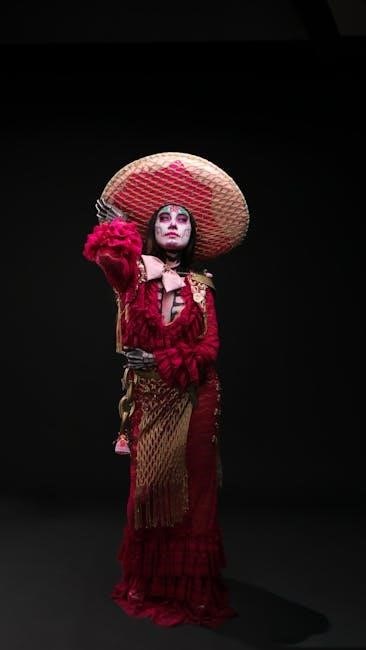
4․2 The Role of the Grave in the Ritual
The grave in the 3rd Degree Masonic Ritual symbolizes transformation and rebirth, representing the candidate’s metaphorical death to old ways and resurrection to newfound wisdom․ It embodies the shedding of past vices and the embrace of moral renewal․ The grave is a powerful visual and emotional element, reinforcing the ritual’s themes of mortality, reflection, and eternal life․ It serves as a stark reminder of life’s transient nature, urging the candidate to contemplate their legacy and spiritual journey․ This symbolic burial and resurrection are central to the ritual’s profound impact, deepening the candidate’s understanding of Masonic principles and their personal growth․
4․3 The Role of the Worshipful Master
The Worshipful Master plays a central role in the 3rd Degree Masonic Ritual, serving as the presiding officer who guides the candidate through the symbolic journey of death, rebirth, and enlightenment․ They are responsible for explaining the deeper meanings of the ritual’s symbols and ensuring the ceremony is conducted with dignity and precision․ The Worshipful Master embodies the principles of wisdom, strength, and leadership, acting as both a teacher and a guardian of Masonic traditions․ Their presence is crucial in maintaining the solemnity and transformative power of the ritual, as they oversee the candidate’s symbolic resurrection and integration into the fraternity’s highest degree․
4․4 The Importance of Secrecy and Discretion
Secrecy and discretion are cornerstone principles in the 3rd Degree Masonic Ritual, ensuring the integrity of the ceremony and the trust among brethren․ The PDF guide emphasizes that these virtues protect the ritual’s sacred nature and prevent misuse of its symbolism․ By maintaining confidentiality, Masons honor the tradition passed through generations, preserving the mystery that inspires personal reflection and growth․ Discretion also fosters a sense of unity and respect within the fraternity, as members are reminded that the ritual’s power lies in its exclusivity and the commitment of its participants․ This ethical framework ensures that the teachings remain profound and transformative for those who undergo the 3rd Degree․
The 3rd Degree Ritual in Modern Context
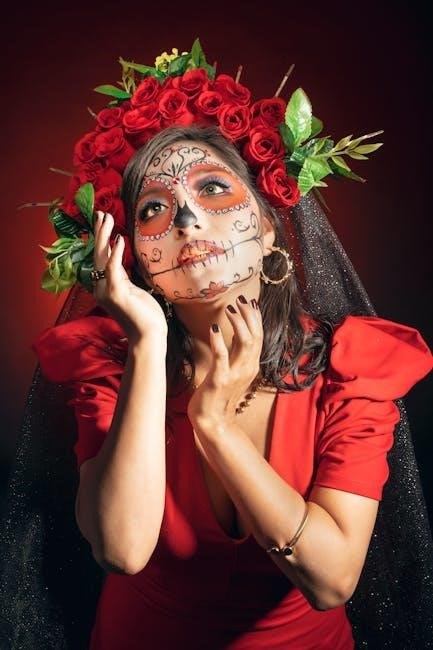
The 3rd Degree Ritual remains relevant today, blending ancient traditions with modern practices, ensuring its timeless values of brotherhood and self-improvement continue to resonate, as outlined in the PDF․
5․1 How the Ritual is Performed Today
The 3rd Degree Masonic Ritual is conducted with reverence, blending tradition and modern practices․ Lodges adhere to centuries-old customs, incorporating symbolic acts and moral lessons․ The ceremony remains solemn, emphasizing the candidate’s spiritual journey․ Modern tools, such as digital resources, enhance preparation and understanding․ The ritual’s core elements—symbolism, theater, and reflection—remain intact, ensuring continuity․ Today, Masonic lodges strive to balance historical authenticity with contemporary sensibilities, making the ritual accessible while preserving its profound significance․
5․2 Relevance of the Ritual in Contemporary Society
The 3rd Degree Masonic Ritual remains highly relevant in today’s society, offering timeless lessons on integrity, compassion, and self-improvement․ Its emphasis on moral values aligns with contemporary quests for meaning, fostering a sense of community in an increasingly fragmented world․ The ritual’s focus on personal growth resonates with modern aspirations for self-development․ By maintaining its historical essence while adapting to cultural shifts, Freemasonry continues to attract individuals seeking a framework for ethical living and spiritual enrichment․ The PDF guide serves as a valuable resource, preserving these traditions for future generations while ensuring their accessibility in a digital age․
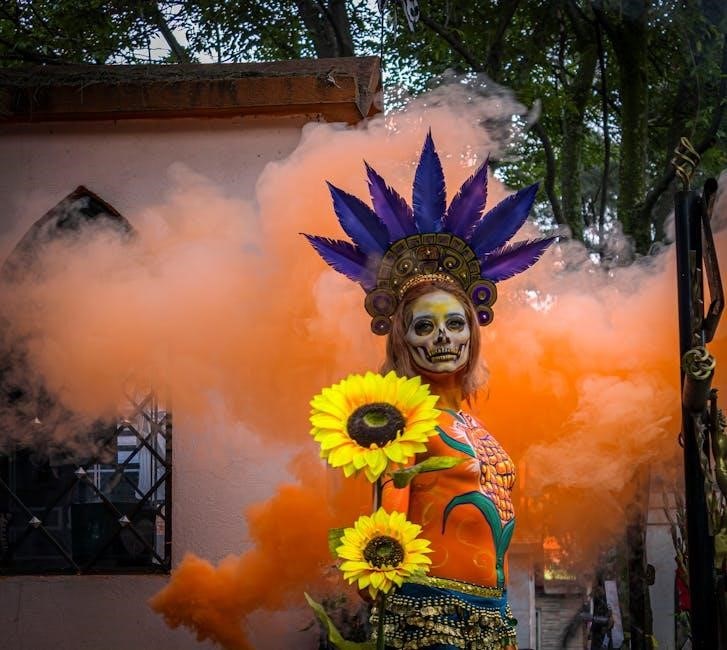
The Role of the Candidate in the 3rd Degree Ritual
The candidate plays a central role, actively participating in symbolic acts, demonstrating commitment, and embracing the profound lessons of the ritual, as outlined in the PDF guide․
6․1 Preparation and Mental Readiness
Preparation for the 3rd Degree Masonic Ritual involves both mental and spiritual readiness․ Candidates are encouraged to reflect deeply on their journey, contemplating the principles of Freemasonry․ Emotional preparation is crucial, as the ritual delves into profound themes․ The candidate should study the teachings of the first and second degrees to fully grasp the symbolism and significance of the third degree․ Mental readiness includes understanding the moral and ethical lessons embedded in the ritual․ Additionally, candidates are advised to engage in self-reflection, ensuring a commitment to personal growth and the values of the fraternity․ This preparation ensures a meaningful and transformative experience during the ritual․
6․2 The Candidate’s Experience During the Ritual
The candidate’s experience during the 3rd Degree ritual is profound and transformative․ It involves a symbolic journey through death and rebirth, testing their resolve and understanding of Masonic principles․ The ceremony is emotionally charged, with dramatic elements designed to imprint deep philosophical truths․ The candidate is guided through a series of trials, each layered with symbolism, reinforcing the teachings of Freemasonry․ The atmosphere is solemn yet uplifting, creating a lasting impression․ The candidate’s active participation and introspection are crucial, as the ritual seeks to elevate their consciousness and commitment to the fraternity․ This experience is deeply personal and often described as life-changing, solidifying their dedication to the Masonic path․
6․3 The Candidate’s Responsibilities Post-Ritual
After completing the 3rd Degree Ritual, the candidate, now a Master Mason, assumes significant responsibilities․ They must uphold the principles of Freemasonry, applying its teachings in daily life․ Secrecy regarding ritual details is paramount, ensuring the integrity of the Order․ Active participation in lodge activities is expected, contributing to the fraternity’s growth․ Mentoring newer members and supporting their masonic journey is also essential․ The candidate should reflect on their experience, deepening their understanding of the ritual’s symbolism․ By embodying masonic values, they become ambassadors of the craft, fostering brotherhood and ethical living․ These responsibilities underscore the candidate’s commitment to personal and communal enrichment․
The Use of Ritualistic Tools and Regalia
Ritualistic tools and regalia in the 3rd Degree hold profound symbolic meaning, enhancing the ceremony’s solemnity and the candidate’s connection to Masonic traditions, as outlined in the PDF․
7․1 The Significance of Masonic Tools in the Ritual
Masonic tools hold profound symbolic meaning in the 3rd Degree Ritual, serving as metaphors for moral and spiritual growth․ The square represents fairness and honesty, while the compasses symbolize boundaries and wisdom․ The trowel, often associated with the spreading of cement, signifies the spreading of brotherly love and unity․ These tools are not merely physical objects but are deeply embedded in Masonic philosophy, teaching candidates to “square their actions with the square of virtue” and to “circumscribe their desires within the compass of reason․” Their use in the ritual underscores the importance of craftsmanship and precision in both personal and communal life, reflecting the fraternity’s emphasis on self-improvement and service to others․
7․2 The Role of Regalia in the 3rd Degree
Regalia in the 3rd Degree Masonic Ritual holds profound significance, representing the candidate’s spiritual and moral transformation․ The distinctive attire, including aprons, gloves, and sashes, symbolizes purity, equality, and the journey from darkness to light․ Each piece of regalia is carefully designed to reflect Masonic principles, such as the white apron embodying innocence and the sash signifying brotherly love․ The Worshipful Master and other officers also wear specific regalia to denote their roles and authority․ The PDF guide provides detailed descriptions of these garments, emphasizing their historical and symbolic importance․ Wearing regalia creates a solemn and reflective atmosphere, fostering unity and adherence to Masonic values․ Understanding its role enhances the candidate’s experience and appreciation of the ritual’s deeper meaning․
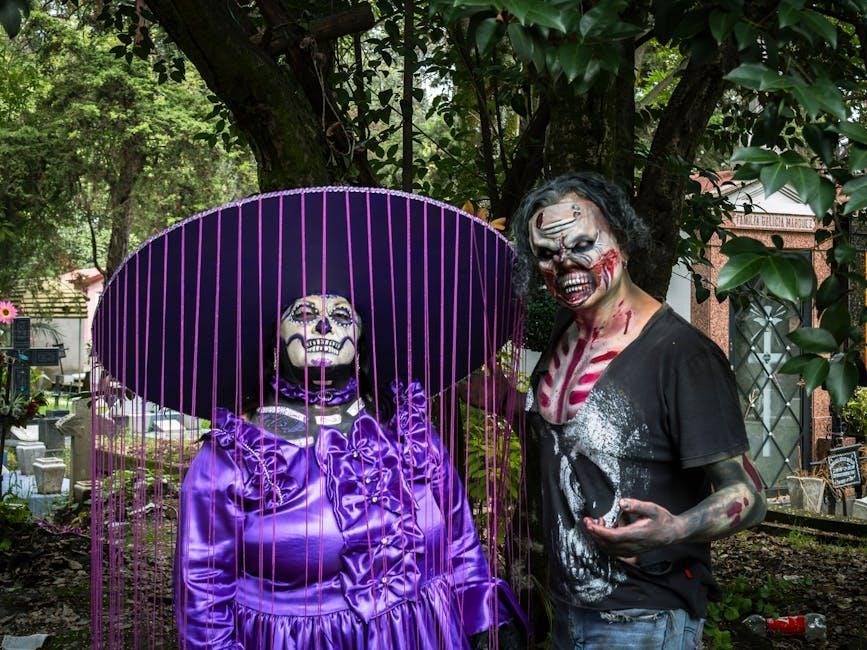
The 3rd Degree Ritual and Its PDF Documentation
The 3rd Degree Masonic Ritual PDF serves as a comprehensive guide, detailing the ceremony, symbolism, and philosophical underpinnings, offering digital convenience for modern Masonic education and reference․
8․1 Overview of the 3rd Degree Masonic Ritual PDF
The 3rd Degree Masonic Ritual PDF is a comprehensive guide detailing the ceremonies, symbols, and philosophical teachings of the Master Mason degree․ It outlines the structure of the ritual, including preparations, dialogues, and symbolic acts, providing insight into the profound lessons of Freemasonry․ The document serves as a valuable resource for candidates preparing for the 3rd Degree, as well as for experienced Masons seeking to deepen their understanding․ It is designed to preserve the integrity and tradition of the ritual while making its teachings accessible in a modern format․ The PDF is often used for private study and lodge reference․
8․2 Key Contents of the PDF
The PDF provides a comprehensive overview of the 3rd Degree Masonic Ritual, detailing its structure, historical context, and symbolic significance․ It includes the ceremony’s dialogue, rituals, and gestures, offering insights into the philosophical underpinnings․ The document outlines the preparation process, roles of participants, and the profound symbolism embedded in the rite․ It also explores the psychological and spiritual journey of the candidate, emphasizing themes of renewal and brotherhood․ Practical guidance for candidates and lodge officers is included, along with interpretations of key rituals and their historical evolution․ The PDF serves as both an educational and reference tool, preserving the tradition while making it accessible for modern understanding․
8․3 Benefits of Having a Digital Version
A digital version of the 3rd Degree Masonic Ritual PDF offers unparalleled convenience and accessibility․ It allows members to carry the document on various devices, ensuring easy access for study or reference․ The digital format enables quick searches, bookmarks, and annotations, enhancing learning and preparation․ Additionally, it saves physical storage space and reduces the environmental impact of printing․ The PDF can be shared effortlessly among members, promoting uniformity in rituals across lodges․ Updates or revisions can also be distributed instantly, keeping everyone informed․ Overall, a digital version bridges tradition with modern technology, making the 3rd Degree Ritual more accessible and practical for contemporary Freemasons while preserving its historical significance and integrity․
8․4 Sources for Acquiring the PDF
Obtaining a legitimate 3rd Degree Masonic Ritual PDF can be done through official Masonic lodges or reputable publishers․ Many Grand Lodges provide access to ritual materials for members, ensuring authenticity․ Additionally, some Masonic supply stores offer digital versions for purchase․ Online platforms may host PDFs, but caution is advised to verify their legitimacy․ Always prioritize sourcing from recognized Masonic authorities to respect intellectual property and tradition․ Unauthorized distribution of ritual texts is discouraged to uphold the fraternity’s values․ Ensure any acquired PDF adheres to your jurisdiction’s guidelines and is used responsibly․
Ethical Considerations and Privacy
Adhering to ethical standards is crucial when handling Masonic PDFs, ensuring confidentiality and respecting the fraternity’s traditions․ Privacy must be upheld to honor the trust placed in members․
9․1 Respect for Masonic Traditions and Secrecy
Respect for Masonic traditions and secrecy is paramount in the 3rd Degree Ritual․ Freemasonry’s essence lies in its time-honored customs, and the PDF guide emphasizes the importance of maintaining confidentiality․ Members are sworn to uphold the fraternity’s principles, ensuring rituals remain sacred and inaccessible to the uninitiated․ This commitment to secrecy fosters trust and preserves the ritual’s mystique, allowing candidates to experience the profound symbolism without external influence․ By honoring these traditions, Masons ensure the integrity and continuity of the craft, keeping its teachings and practices alive for future generations while safeguarding its legacy from misuse or misinterpretation․
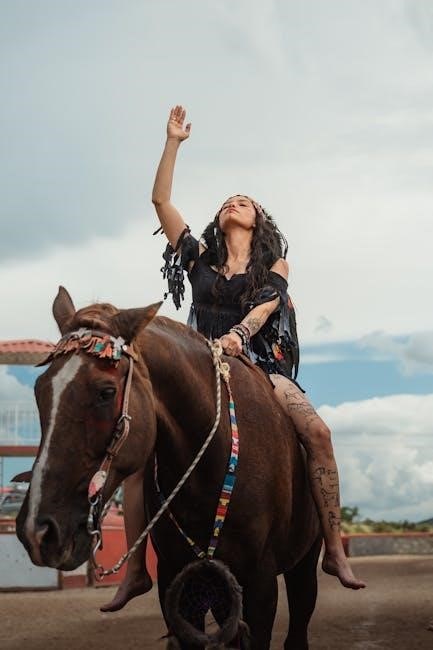
9․2 Ethical Use of the PDF Material
Using the 3rd Degree Masonic Ritual PDF ethically involves respecting its intended purpose as an educational tool for Masonic education․ Members should adhere to guidelines set by their Grand Lodge, ensuring the document is not shared with non-Masons or used for commercial gain․ Privacy and confidentiality are paramount, as the rituals contain sacred symbolism and teachings meant only for initiated brethren․ Proper storage and secure handling of the PDF prevent unauthorized access, upholding the fraternity’s traditions․ Ethical use also involves avoiding alterations or misrepresentation of the content, preserving its integrity for future generations․
The 3rd Degree Masonic Ritual is a profound milestone in Freemasonry, embodying themes of personal growth, brotherhood, and the pursuit of wisdom․ As outlined in the PDF guide, it serves as a transformative experience, offering deep insights into Masonic philosophy and symbolism․ The ritual underscores the importance of self-discovery, ethical living, and communal bonds, while the digital format ensures accessibility for modern practitioners․ By studying the PDF, candidates and members alike can gain a richer understanding of the tradition’s significance and its relevance in contemporary life․ Ultimately, the 3rd Degree remains a cornerstone of Masonic teachings, fostering enlightenment and unity among its adherents․

